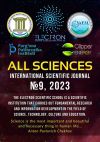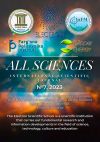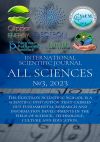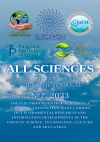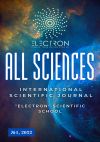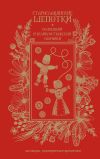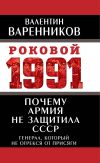Текст книги "Методическая разработка по английскому языку по специальности «Стандартизация, сертификация и метрология»"

Автор книги: Баян Исабаева
Жанр: Зарубежная образовательная литература, Наука и Образование
сообщить о неприемлемом содержимом
Текущая страница: 1 (всего у книги 9 страниц) [доступный отрывок для чтения: 2 страниц]
Махметова Д.М., Исабаева Б.К., Апекова Р.Н.
Методическая разработка по английскому языку по специальности «Стандартизация, сертификация и метрология».
ПРЕДИСЛОВИЕ
Метрология, стандартизация, сертификация это три взаимосвязанные области знаний, которые являются важными инструментами в обеспечении качества продукции и услуг, разработке, создании и реализации конкурентоспособной продукции. С развитием экономических отношений и выходом Казахстана на мировой рынок значение стандартизации, сертификации и метрологии в науке, производстве и техники значительно выросло. И соответственно вырос интерес студентов к этим наукам. Данная методическая разработка предназначена для студентов физико-технического факультета специальность: 5В073200 «Стандартизация, сертификация и метрология». Цель методической разработки – дать студентам необходимую подготовку к пониманию терминологии и употреблении лексики по основам метрологии, стандартизации и сертификации на английском языке, чтобы стать конкурентоспособными специалистами на рынке труда. При составлении методической разработки авторы использовали аутентичные тексты по метрологии, стандартизации и сертификации. К каждому уроку дается обширный словарь терминов и слов общеупотребительной лексике по данной специальности, что позволяет обогатить и расширить словарный запас студента по важным аспектам его специальности. А также, созданы задания для закрепления материала и задания для контроля знаний, умений и навыков по изученному материалу.
LESSON 1
Vocabulary
etrology – система мер,
метрология – метрология, өлшем жүйесі
measurement – измерение – өлшеу, өлшем
to include – включать – қосу, кірістіру, жүргізу, енгізу
determination – определение – анықтау, анықтама
uncertainty – неточность, погрешность – дәл еместік, белгісіз; тәртіп бұзушылық
measurement device – измерительный прибор – өлшеуіш аспап
to embrace – охватывать – қамту; қапсыру, құрсаулау
field – область – көз аясында болу; аймақ
measure – мера – өлшем; шама, мөлшер, шегі
to measure – измерять – өлшеу
weight – вес, единица массы – салмақ, масса бірлігі
quantity – количество – сан; мөлшер сан
applied metrology – прикладная метрология – қолданбалы метрология
legal metrology – законодательная метрология – заңды метрология
industrial metrology – измерения в промышленности, промышленная метрология – өнеркәсіптегі өлшем, өнеркәсіпті метрология
technical metrology – технические измерения – техникалық өлшем
length – длина – ұзындық; қашықтық; кесінді
broad – широкий – кең; үлкен; толық, анық
unit of measurement – единица измерения – өлшеу бірлігі
traceability – единство измерений, прослеживаемость, связь средств измерений с национальными эталонами, отслеживаемость – өлшемнің біртұтастығы; бақылаушылық, өлшеу құралдарының ұлттық эталондармен байланысы, бақыланатындық
to link – связывать – байланыстыру; біріктірy; қатысу, араласу
reference standard – эталонный образец, эталонный стандарт – эталлондық үлгі, эталондық стандарт
statutory requirements – законодательное требование – заңды талап
calibration – калибровка, точное измерение, градуировка, аттестация –үлгілеу, дәл өлшем, өлшемдеу, тексеру; сынау, тексеру
Ex. 1 Read and translate the text
Metrology
Metrology is the science of measurement. Metrology includes all theoretical and practical aspects of measurement. Metrology is defined by the International Bureau of Weights and Measures (BIPM) as «the science of measurement, embracing both experimental and theoretical determinations at any level of uncertainty in any field of science and technology)). The international vocabulary of metrology (VIM) is maintained by the Joint Committee for Guides in Metrology (JCGM), a group which is made up of eight international organizations.
Metrology is a very broad field and may be divided into three basic activities:
– Definition of internationally accepted unit of measurement.
– Realization of these units of measurement in practice
– Application of chains of traceability which links measurements made in practice to reference standards.
Metrology also has three basic subfields, all of which make use of the three basic activities, though in varying proportions:
– Scientific or fundamental metrology
– Applied, technical or industrial metrology
– Legal metrology
Scientific or fundamental metrology concerns the establishment of quantity systems, unit systems, units of measurement, the development of new measurement methods, realization of measurement standards and the transfer of traceability from these standards to users in society. The BIPM maintains a database of the metrological calibration and measurement capabilities of various institutes around the world. These institutes, whose activities are peer-reviewed, provide the top-level reference points for metrological traceability. In the area of measurement the BIPM has identified nine areas. These metrological areas include length, mass and time.
Applied, technical or industrial metrology concerns the application of measurement science to manufacturing and other processes and their use in society, ensuring the suitability of measurement instruments, their calibration and quality control of measurements. Although the emphasis in this area of metrology is on the measurements themselves, traceability of the calibration of the measurement devices is necessary to ensure confidence in the measurements.
Legal metrology concerns activities which result from statutory requirements and concern measurement, units of measurement, measuring instruments and methods of measurement and which are performed by competent bodies.
Ex. 2. Answer the questions
1. What is metrology ?
2. What is legal metrology ?
3. What are the three main activities of metrology ?
4. What organization gave the definition for metrology ?
5. What is necessary to ensure confidence in measurements?
Ex. 3. Are these sentences true or false ?
1. Metrology deals with measurements.
2. The BIPM provides people wi th reference standards in different fields.
3. In the area of measurement the BIPM has identified ten areas.
4. These areas of measurement defined by the BIMP include mass, time, length.
5. Applied metrology is connected with applying measurement science for only research process.
6. The activities which are concerned by legal metrology result from statutory requirements.
7. Measuring devices provide the confidence of measurement.
Ex. 4. Fill the blanks using the words from the text: «Metrology» .
Metrology studies measurements. This science include both theoretical and practical …According to the definition given by the International Bureau of Weights and Measures (BIPM): metrology is a science of measurement which gives theoretical and experimental … at any level of uncertainty. The main goals of metrology is to … units of measurements, to realize … into practice and t o apply the chains of traceability which connects measurements made in practice with …
Ex. 5. Match the beginning with the endings based on the text

Ex. 6. Put the question to the bold-typed words:
1. Scientific metrology concerns the establishment of quantity systems.
2. The Joint Committee for Guides in Metrology (JCGM) maintains the international vocabulary of metrology (VIM).
3. BIPM has identified nine areas
4. These metrological areas include time, mass, length.
5. Legal metrology is a subfield of metrology.
Ex. 7. Make the summary of the text: «Metrology» using the following plan:
1. Definition of metrology;
2. Subfields of metrology;
3. The object of study of scientific metrology;
4. The object of study of the applied metrology;
5. The object of study of legal metrology.
Project Work:
«Do I know any organization on metrology in my country?»
Tell about any organization on metrology functioning in your country on the following plan:
1. When was this organization founded?
2. Where is it situated?
3. What kind of services does this organization provide?
4. Is it the only organization in metrology in your country?

5. What specialists work there?
6. In what spheres of human activity does this organization provide metrological services? Give the examples.
7. What metrological laboratories does this organization include?
8. Is this organization important in your country?
9. Are you planning to work in this organization in the future?
10. Have you ever visited this organization ?
LESSON 2
Vocabulary
metrological traceability – метрологическая прослеживаемость – метрологиялық бақылау
core сoncept – основное понятие – негізгі түсінік
to establish – устанавливать – құру, қою; орнату, орналасу
property – свойство – қасиет
value – значение – мән; мағына
reference – эталон – эталон, үлгі, өлшем
standard – стандарт – стандарт
to perform – осуществлять, проводить – істеу; жүзеге асыру, іске асу
measuring instrument – измерительный прибор – өлшеуіш аспап
range – диапазон – ауқым
quality – качество – сапа; қасиет
quality management system – система управления качеством – сапаны басқару жүйесі
accuracy – правильность – ұқыптылық; дұрыстық
systematic bias – систематическая ошибка – жүйелі қате
precision – точность – дәлдік; бірдейлік
evaluation – оценка – бағалау, баға кесу; баға
primary standard – первичный стандарт – алғашқы стандарт
error – погрешность, серьезная ошибка – қате, адасу, жаңылу, маңызды қате
ratio – соотношение – қатыс, арақатынас, өзара қатынас; байланыс
previous – предыдущий – бұдан бұрынғы, осыдан ілгері, өткен
comparability – сопоставимость – салыстыру
to use – использовать – пайдалану
equipment – оборудование – жабдық
voltmeter – вольтметр – вольтметр
triple point – тройная точка – үштік нүкте
specimen – образец – үлгі
X-rays – рентгеновские лучи – рентгендік сәулелер
electron beam – пучок электронов – электрондар шоғы
to read – показывать – көрсету; әйгілеу; байқату; таныту; білдіру
constant – постоянный – тұрақты; бірқалыпты, өзгермейтін
to verify – проверять – тексеру, қарап шығу; сынап байқау
to adjust – устанавливать (прибор) – (аспапты) орнату, орналастыру
to allow for – предусматривать – алдын ала ескеру; назарда ұстау
to settle – устанавливать – қоныстану, орналасу; ретке келтіру
distinction – различие – айырма; ерекшелік
inexact – неточный – дәл емес
critical part – важная часть – маңызды бөлім
measurement uncertainty – погрешность измерений – өлшем қателігі
to reserve for – предназначать – арнау, белгілеу; жарату; тағайындау
lead – провод – бастау, көрсету; алып жүру; апару
establishment – установление – орнату
Ex. 1. Read and translate the text
Metrological traceability
A core concept in metrology is metrological traceability, defined by the BIPM as «the property of the result of a measurement or the value of a st andard whereby it can be related to stated references, usually national or international standards, through an unbroken chain of comparisons, all having stated uncertainties)). The level of traceability establishes the level of comparability of the measurement: whether the result of a measurement can be compared to the previous one, a measurement result a year ago, or to the result of a measurement performed anywhere else in the world.
Traceability is most often obtained by calibration, establishing the relation between the indication of a measuring instrument and the value of a measurement standard. These standards are usually coordinated by national metrological institutes: National Institute of Standards and Technology, National Physical Laboratory, UK, etc. Traceability is used to extend measurement from a method that works in one regime to a different method that works in a different regime. An example would be the measurement of the spacing of atomic planes in the same crystal specimen using both X-rays and an electron beam. Traceability also refers to the methodology used to calibrate various instruments by relating them back to a primary standard. Traceability, accuracy, precision, systematic bias, evaluation of measurement uncertainty are critical parts of a quality management system. Mistakes can make measurements and counts incorrect. Even if there are no mistakes, nearly all measurements are still inexact. The term «error» is reserved for that inexactness, also called measurement uncertainty. Among the few exact measurements are:
– The absence of the quantity being measured, such as a voltmeter with its leads shorted together: the meter should read zero exactly.
– Measurement of an accepted constant under qualifying conditions, such as the triple point of pure water: the thermometer should read 273.16 Kelvin (0.01 degrees Celsius, 32.018 degrees Fahrenheit) when qualified equipment is used correctly.
– Self-checking ratio metric measurements, such as a potentiometer: the ratio in between steps is independently adjusted and verified to be beyond influential inexactness.
All other measurements either have to be checked to be sufficiently correct or left to chance. Metrology is the science that establishes the correctness of specific measurement situations. This is done by anticipating and allowing for both mistakes and error. The precise distinction between measurement error and mistakes is not settled and varies by country. Calibration is the process where metrology is applied to measurement equipment and processes to ensure conformity with a known standard of measurement, usually traceable to a national standards board.
Ex. 2. Answer the questions
1. What is metrological traceability ?
2. What does the level of comparability of the measurement mean?
3. What are the critical parts of management quality system ?
4. What is the term «error» reserved for ?
5. What organizations coordinate standards ?
Ex. 3. Are these sentences true or false ?
1. Traceability is most often obtained by evaluation.
2. Metrological traceability was defined by the UN.
3. Metrological traceability is a core concept in metrology.
4. All other measurements either have to be checked to be sufficiently correct or left to chance.
5. Errors can make measurements and counts incorrect.
6. The precise distinction between measurement error and mistakes has been already settled.
7. Calibration is a process where metrology is not applied to measurement equipment.
Ex. 4. Fill the blanks using the following words: establishment, instrument, correctness, to achieve, calibration, term, standard, metrological, key
Metrological traceability is a … concept. This … was introduced by the BIMP. Metrological traceability allows establishing the … of the obtained measurement result and the correspondence of this result with the national … The accuracy of the measurement result is by … the comparability with the previous results obtained earlier. Traceability is obtained by … Calibration means the … of the relation between the indication of a measuring … and the value of a measurement standard. These standards are coordinated by national … institutes.
Ex. 5. Match the beginning with the endings based on the text

Ex. 6. Put the question to the bold-typed words:
1. This method works in one regime.
2. National metrological institutes coordinate standards.
3. The level of traceability establishes the level of comparability of the measurement.
4. New measurement result is compared with the previous measurement result.
5. To establish the precision of the obtained result we must compare it with the previous one.
Ex. 7. Make the summary of the text: «Metrological traceabi– lity», using the following plan:
The definition of metrological traceability;
The way of obtaining metrological traceability;
The spheres of the use of metrological traceability.
Grammar and spelling quiz
Find and correct the grammar and spelling mistakes in the following passages a) Scientific metrology
Scientific metrology are an uantity of metrology. It deal of the establishmen of uantity system, unit system. Scientific metrology develop new methods of measurement. S cientific metrology are called also fundamental metrology. It help to implement all of the measurement standards into practice. Scientifc metrology transfer traceability from the standards to in society users. This sub field of metrology play a important role in society life.
b) What is traceability?
Traceability is o btained by calibration often. Calibration establishe t he relation between the indication of an m easuring instrument and an value of a measurement standart. These standards is u sually coordinated with n ational metrological institutes: National Institute of Standards and Technology, National Physical Laboratory, UK, etc. Traceability are use to extended measurement from a method that work in one regime to a different method who work in a diferent regime. An example would be the measurement of the spacing of atomic planes in the same crystal specimen using both x-rays and an beam electron.
LESSON 3
Vocabulary
influence – влияние – ықпал; әсер
humidity – влажность – ылғалдық, дымқылдық
vibration – вибрация – теңселіс, діріл, тербеліс
electrical power supply – подача электроэнергии – электрэнериясын беру
radiated energy – энергия излучения – сәуле шығару энергиясы
rate – скорость – жылдамдық;шапшаңдық
detrimental – причиняющий вред, вредный – зиян келтіргіш, зиянды
technician – техник – техник, эксперт
Calibration technicians – технический специалист по калибровке – үлгілеу бойынша техникалық маман
to execute – выполнять – орындау, өтеу; жасау, істеу
set-up – установка – құру, орнату, қондыру; қондырғы
set-up people – персонал по установке оборудования – жабдық орнататын қызметкер
tear-down – разборка – ажырату, айыру, кесіп алу; өңдеу, істеп қою
tear-down people – персонал по разборке оборудования – жабдықты ажырататын қызметкер
to dismantle – разбирать – талап әкету, реттеу, ыдырату; талғау, талдау
area – область – аймақ; аудан, жеp, кеңістік
dimensional – относящийся к размеру – өлшемге қатысты болу
regardless of – независимо – тәуелсіз; немқұрайды, еліктейтін
Metrology technician – технический специалист в области метрологии – метрология саласындағы техникалық маман
investigation work – исследовательская работа – зерттеу жүргізу жұмысы
to evaluate – оценивать – бағалау, баға қою, баға кесу
out – of – tolerance – вне допуска – шектен тыс
out-of-tolerance notification – уведомление о выходе из допуска – шектен шығу туралы хабарлама
specifications – технические характеристики – техникалық сипаттамалар
task documentation – документация по выполненным работам – орындалған жұмыстар туралы құжаттама
to provide – обеспечивать – қамтамасыз ету
Ex. 1. Read and translate the text Applied metrology
Metrology laboratories are places where both metrology and calibration works are performed. Calibration laboratories generally specialize in calibration work only.
Both metrology and calibration laboratories must isolate the work performed from influences that might affect the work. Temperature, humidity, vibration, electrical power supply, radiated energy and other influences are often controlled. Generally, it is the rate of change or instability that can be very detrimental.
Calibration technicians execute calibration work. In large organizations, the work is further divided into three groups:

Alternatively, the technicians can be divided by major discipline areas: physical, dimensional, electrical, microwave and so on. But the principles are the same regardless of the equipment. Metrology technicians perform investigation work in addition to calibrations. They also apply proven principles to known situations and evaluate unexpected or contradictory results. Metrologists are people who perform metrology work at and above the technician levels.
The metrology and calibration work is always accompanied by documentation. The documentation can be divided into two types; one related to the task and the other related the administrative program. Task documentation includes calibration procedures and the data collected. Administrative program documentation includes equipment identification data, calibration certificates, calibration time interval information and 'as-found' or 'out-of-tolerance' notification. Administrative programs provide standardization of the metrology and calibration work and make it possible to independently verify that the work was performed. Generally, the administrative program is specific to the organization performing the work and addresses customer requirements. General administrative program specifications created by industry groups, such as the ANS (ANSI) Z540 series may also be covered in the administrative program. Other specifications created by the US Food and Drug Administration, US Federal Aviation Administration or other agencies would supplement or replace ANS Z540 for work performed in their domains. Often administrative programs can be as complicated and detailed as the measurement work itself.
Ex. 2. Answer the following questions
1. What does calibration laboratories specialize in?
2. What documentation is calibration and metrology work accompanied by?
3. What work do metrology technician do ?
4. What is ANS ?
5. What do administrative programs provide ?
Ex. 3. Are these sentences true or false?
1. The metrology and calibration work is always accompanied by documentation.
2. Administrative programs provide standardization of certification.
3. Metrology work is done by government.
4. Tear – down people set-up equipment for calibration.
5. Operators perform calibration procedures.
6. Set-up people collect data.
7. ANS is an administrative program for standardization of metrology and calibration work.
Ex. 4. Fill the blanks using the words from the text: Applied metrology
Metrology … ar e places where calibration and metrology works are performed. These … can be found today in many countries … laboratory is specialized in calibration. Calibration work is done by calibration … These are people with an engineering degree. In metrology … the work is divided between people wh o are responsible for setting – up … ne eded f or calibration, operators who execute calibration … and collect data and people who … sets-up.
Ex. 5. Match the beginning with the endings based on the text

Ex. 6. Put the questions to the bold-typed words:
1. Metrologists perform metrology work.
2. Task documentation includes calibration procedures and collected data.
3. An administrative program provides standardization.
4. These programs standardize calibration work.
5. ANS is a specification created by this program.
Ex. 7. Make the summary of the text: «Applied metrology» using the following plan:
The Conditions for performing calibrating works in the laboratory;
Staff involved in these works and their functions.
Project work
Is applied metrology important for researchers? Give your viewpoint.
